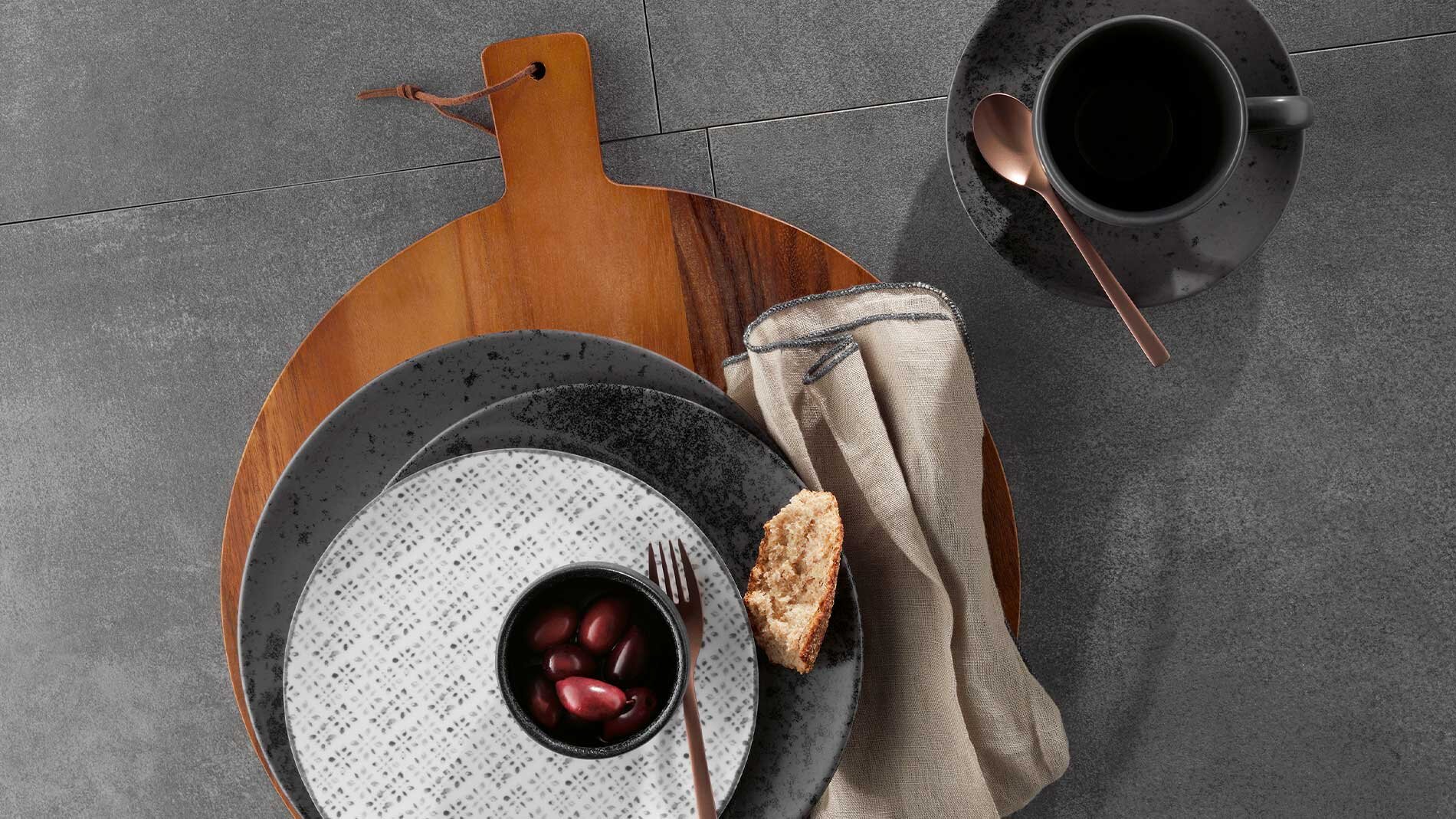Decor service for porcelain

Porcelain professes color with colorful decorations
Porcelain is the business card for your gastronomic facility. It should convince not only by functionality, but also by an interesting appearance with decor. Choose from the wide range of our standard decors or use the creativity of our decor service to realize the ideas of your establishment.
In close coordination with our customers, distinctive individual decors are created in our creative center. Elegant colors, original vignettes or graphic patterns - each decor is a personal statement. The inglaze decors from Bauscher and Schönwald are extremely hard-wearing. At high firing temperatures, the decor images sink deeply into the glaze and fuse with it. This prevents the decors from fading or being damaged.
Decor as desired
Individual decor development is possible from as little as 400 parts (across all articles). Standard decors can serve as a source of inspiration and can be adapted to your corporate design, e.g. with regard to corporate colors.
In close cooperation with you, the BHS tabletop creative center also develops individual decors, tailored to the respective room ambience and gastronomic concept. The designs from our creative center are a free, non-binding service for you.

What exactly is a porcelain decor anyway?
The word "decor" is short for decoration. White porcelain thus serves as a base for colored decorations. There are different decoration techniques with which the porcelain colors are applied. In essence, they are:
- Over slide, which is made by ceramic screen printing and applied by hand.
- With the spray gun, guided by hand or robotically.
- By brush, guided by hand or by machine.
In order for the porcelain color to adhere to the dinnerware in a particularly long-lasting and intense manner in its colorfulness, the porcelain color melts into the glaze in an inglaze decoration process. In the inglaze process, the porcelain is fired a third time at approx. 1250 °C. The glaze softens again and can be removed from the glaze. The glaze softens again and envelops the porcelain color. After firing, the decoration is largely covered by the glaze and protected from external mechanical or chemical influences. Conversely, the porcelain article also has the best hygienic properties. The hard glaze is particularly robust, impact and scratch resistant.

What raw materials do porcelain colors consist of and what does the REACH regulation have to do with it?
Porcelain color consists of color-giving metal oxides and bonding fluxes or glaze fluxes. The effects of REACH affect us indirectly. Our paint manufacturers are required here to substitute ingredients that do not comply with the regulation.
What exactly does REACH stand for?
The REACH regulation is a regulation of the European Union. It was enacted to improve the protection of human health and the environment from the risks that can be caused by chemicals. The abbreviation Reach stands for registration, evaluation, authorization and restriction of chemicals.
Porcelain paints in use
By using lead-free paints, employees are no longer exposed to lead during processing. Our decors are regularly tested in accordance with the applicable regulations in order to reliably comply with the specified limits.
In summary, our inglaze decors remain color-brilliant and visually beautiful for a long time.
The process of durable inglaze decoration of porcelain
In the process of inglaze decoration, the porcelain color is applied to the finished white porcelain. The porcelain is then fired a third time at approximately 1,250 °C. The glaze is liquefied again so that the decorative layer can sink into the protective glaze in a dishwasher-safe manner.
After firing, the decoration is thus protected from external mechanical or chemical influences. The advantage of an inglaze decoration is that a wide range of colors is available for porcelain decorations. In addition, the porcelain article has the best hygienic properties. The hard glaze is particularly robust, impact and scratch resistant. By the way, inglaze decoration is also called sinking or sharp fire decoration.

What other decoration methods are there?
The on-glaze decoration
After the 2nd firing, also known as glost firing, the glaze is smooth-fired. and melted This also explains the name "glost firing". This happens at a firing temperature of about 1,400 °C. After this, the on-glaze decoration can be applied, whereby its melting point must be below the softening point of the glaze. The decorated porcelain is thus fired at a melting temperature of approx. 750 - 900 °C. The firing temperature of the on-glaze decoration depends on the color used.
Underglaze decoration
In underglaze decoration, the decoration is applied to the porcelain piece directly after the glow firing (1st firing). Due to the high glost firing temperature (2nd firing) at over 1,400 °C, the color range is significantly limited, as many of the porcelain colors cannot withstand such a high temperature. At BHS tabletop, only the green base stamp is stamped onto the porcelain body directly after the 1st firing and thus processed in the underglaze process.


What are the differences between the methods of decorating porcelain?
Underglaze and inglaze decorations are dishwasher safe and have a long shelf life, which is at least 3,000 dishwasher cycles. The color palette for underglaze decorations is very limited, with cobalt blue being one of the most popular underglaze colors. In comparison, inglaze colors offer a wide range of colors. Inglaze metallic colors are particularly interesting. The metallic effect is achieved without the use of precious metal. Therefore, metallic colors are microwaveable. In case of frequent use of porcelain with onglaze decoration, it should be noted that the decoration is not so durable and therefore only dishwasher safe.

Décor development for Hotel Bristol Oslo
Personalized tableware was at the top of the wish list for the renovation of the Hotel Bristol in Oslo.
The DELIGHT collection was chosen, which was decorated with a green background and the hotel logo in gold.



















